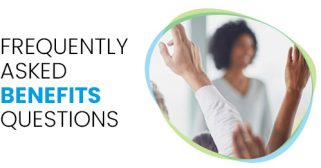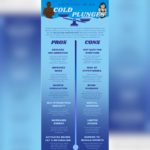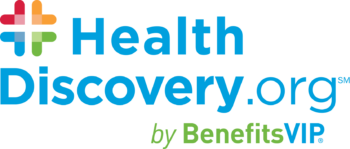Social media emitted a collective gasp as fans reacted to the death of American actor Luke Perry who died in March 2019 of a massive stroke. How could that happen, fans wanted to know. The fact is, sudden stroke and heart attack are impacting younger adults.
Perry, who was only 52 when he passed away, lives on in our collective consciousness as the teen heart throb Dylan McKay in the 1990s TV series “Beverly Hills 90210.” Our collective consciousness also tends to relegate strokes to the very old, not to people in the prime of life. While strokes in middle-aged and younger adults are still relatively uncommon—comprising 10% to 15% of all stroke patients—the condition is increasing in those age categories.1
The culprit? In some cases, genetics and family history are factors. But the medical community puts most of the blame on personal lifestyle choices. Stroke (and its close cousin heart attack), can develop from preventable factors, such as obesity, diabetes, smoking, stress, a sedentary lifestyle, high cholesterol and high blood pressure.
In one study, stroke survivors treated by a California healthcare system over a 15-year period were grouped by age, ranging from 1 month to 49 years. Researchers compared traditional risk factors for stroke–such as high blood pressure, diabetes, smoking, obesity and high cholesterol–among the survivors and people of similar ages who hadn’t had strokes. They found the odds of having a stroke increased significantly as people entered their 20s if they also had high blood pressure or another risk factor.2
Massive stroke and heart attack in younger people are particularly devastating. Both can leave victims disabled, or worse, in their most productive years. Years ago my friend Lynn’s husband, Hugh, had a stroke at age 39. He’d had no symptoms other than elevated blood pressure. He liked pizza, beer and cigarettes, which helped him relax from his high-stress job as a stock broker. Hugh was driving to work one morning when the police found him slumped over the steering wheel on the shoulder of the road. He was dead; an autopsy showed a massive stroke. Lynn, who was devastated, also had to contend with raising a young child alone and paying a mortgage she couldn’t manage without Hugh’s salary.
Heart attack in younger people is also rising. A recent study published in the American Heart Association’s journal, Circulation, reported on investigations of heart attacks in young patients, a group that’s often overlooked in cardiovascular research. They included data from a multi-state study of more than 28,000 people of all ages hospitalized for heart attacks from 1995 to 2014. The result: 30% of those patients were young, age 35 to 54.3
The same study showed that among young women, the increase in heart attacks jumped from 21% to 31%, a bigger hike than in young men. Why? Researchers concluded that younger women had a lower probability than men of getting cholesterol-lowering therapy.
“Cardiac disease is sometimes considered an old man’s disease, but the trajectory of heart attacks among young people is going the wrong way. …It’s actually going up for young women,” said Dr. Sameer Arora, the heart attack study’s lead author. “This is concerning. It tells us we need to focus more attention on this population.”
The potential for heart attack and stroke, regardless of age, often hides in plain sight. That’s why prevention, such as changing unhealthy behaviors and getting annual medical exams, has even more urgency.
Annual medical exams and preventive screenings for blood sugar and cholesterol, as well as high blood pressure, etc., save lives when diabetes and other serious chronic conditions are found and treated. A HealthDiscovery.org article last year relayed the story of Cheryl, who had her blood sugar checked during a worksite health fair. Prior to the screening, which involved a finger stick to assess her glucose (blood sugar) level, Cheryl had experienced frequent bouts of feeling jittery, anxious, foggy and confused. The finger stick revealed her blood sugar was low, which sent Cheryl to the doctor. Diagnosis: pancreatic cancer. She is doing well today. She said her company’s health fair saved her life.
If you get your medical insurance through your job and your employer hosts a health fair with cholesterol, blood pressure and blood sugar checks, what have you got to lose by participating? Even if you don’t have access to on-the-job health screenings, it’s worth it to see a general practitioner once a year for a physical exam. Ask the doctor to order baseline screenings for blood sugar and cholesterol.
Most health insurance plans must cover a set of preventive services—like immunizations and screening tests—at no cost. This includes plans available through the Health Insurance Marketplace (also called Obamacare). These services are free only when delivered by a doctor or other provider in the plan’s network.4
If you have questions on what kind of exams and screenings your medical plan covers, you can find the information in your annual benefits guide, or check with your health insurance carrier.
Knowing your screening numbers is the first step to understanding your risk and preventing a heart attack or massive stroke, no matter your age.
1 National Institutes of Health, “Strokes in Young Adults”
2 American Heart Association, “High Blood Pressure Tops List of Factors Contributing to Stroke in Young Adults”
3 American Heart Association Circulation Journal, “Twenty-year Trends and Sex Differences in Young Adults”
4 Healthcare.gov, “Preventive Health Services”
More Resources
Mayo Clinic, “Sudden Death in Young People: Heart Problems Often Blamed”
American Heart Association, “Heart Attacks are Becoming More Common in Younger People, Especially Women”
Self, “7 Stroke Risk Factors All Women Need to Be Aware Of”
Stanford Health Care, “Stroke In Young People FAQs”














